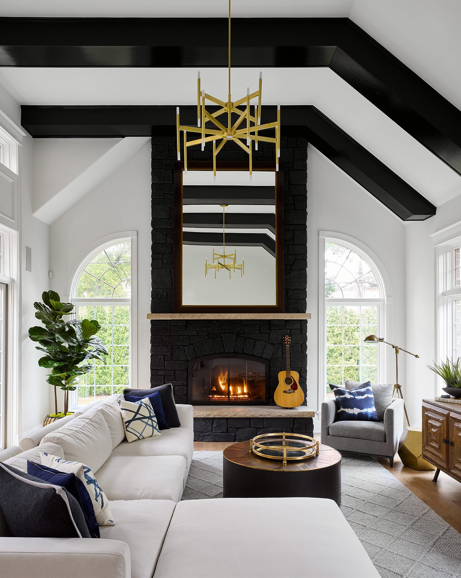TOP 4 MYTHS ABOUT DESIGN NETWORK TV SHOWS (HGTV & DIY NETWORK SECRETS)
TOP 4 MYTHS ABOUT DESIGN NETWORK TV SHOWS (HGTV & DIY NETWORK SECRETS)
February 19, 2021
We’ve all spent a Saturday binge-watching popular HGTV and DIY Network home improvement shows like Fixer Upper, House Hunters and Rehab Addict. And now, self-proclaimed designers are even showing off projects in 3-minute TikTok videos, adding to the mystique of what it actually takes to complete a complex interior design project. Stop the madness!
We thought we’d pull back the curtain to reveal what goes on behind the scenes of these ubiquitous productions. From who actually does the work to the time and money it would take the average homeowner to complete these full-scale projects, we’re here to dispel the myths behind this interior design magic.
Myth #1: The host of the show is the lead designer of the project.
Reality: Early in her career, our Founder Emily Mackie was a ghost designer for such well-known HGTV and DIY Network shows as Meg’s Great Rooms with Meg Caswell and Kitchen Crashers with Alison Victoria. You’re most likely familiar with these household names (at least in households that are design savvy).
What exactly is a ghost designer? Emily was the person to meet with the homeowner; identify their needs; draw up the designs, 3-Ds and elevations; negotiate with each vendor to secure all of the product; and manage all of the budgets and pricing. Emily was then responsible to present the project to the network.
The face of the TV show is often just that — while the real work is done by a team of talented, dedicated and hard-working designers, contractors and builders. It truly takes a village (and a vision!) to create a cohesive, beautiful home design.
Myth #2: The planning involved for an interior design project can be wrapped up in a neat 60-minute time slot.
Reality: There are countless steps that need to be taken before a design project gets off the ground. Think: executing space planning, considering existing condition drawings, mapping out materials, creating elevations, soliciting expert opinions, coordinating with contractors, getting a fair amount of bids … and the list goes on. There are reasons why people hire professionals.
In other words: This type of work doesn’t happen overnight, let alone in the span of an hour-long TV show. When Emily did this type of work, three months of planning, coordinating and buying products took place — and that was before the filming schedule kicked off.
Social media sites like TikTok can disillusion homeowners even further — what looks to be a simple living room refurnishing project most likely took days of measurements, making plans and sourcing materials.
Myth #3: The pricing reflected in the show is what the average homeowner can expect.
Reality: As one might guess, TV networks are offered significant discounts by vendors that want the high-profile exposure from their products being featured on their shows and marketed to audiences who are interested in home improvement projects. Big-name furniture, appliances and other home design companies get powerful product placements, but the actual dollar amounts are muddied.
Not only is the product pricing featured on these shows not accurate, it’s not attainable by the average homeowner. Because individuals don’t possess the buying power of these networks, they’ll purchase the products featured at full price.
Myth #4: The completed project fits the homeowner’s long-term lifestyle and needs.
Reality: Even though Emily would meet with clients beforehand to determine their direction for each project, the show’s producers often had their own ideas about what would look good on the screen. These masters of illusion would persuade the homeowner to sign off on what the network thought was best, not taking into account that the family would need or desire out of their home in the years to come.
With a fast-paced production schedule, the construction and design of the project would move at a breakneck pace, often with paint still wet and items propped up and duct taped when the cameras started rolling. What was a set design for the crew is an actual residence for the homeowner, often leaving them high and dry.
Fact Not Fiction
While indulging in home design shows is great for inspiration, working hand-in-hand with a qualified interior design team in real life brings your long-term dreams to fruition without any pretense. To create a comprehensive home design that reflects your personality and fits your lifestyle takes a careful, collaborative approach with an interior designer — not someone who just plays one on TV.






